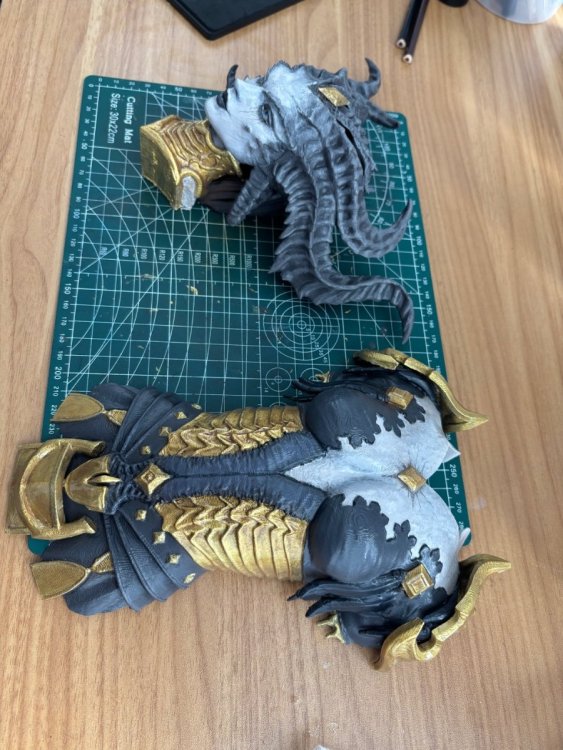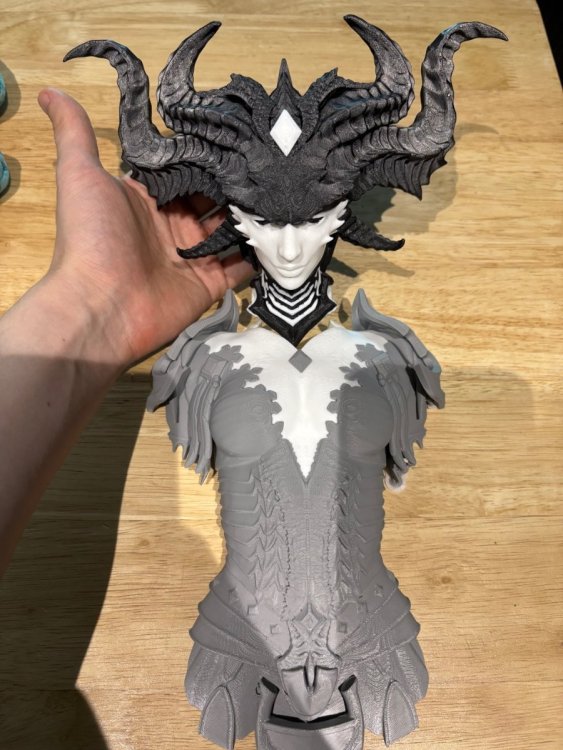Overview
About This Club
- What's new in this club
-
Illusionator PC crashing/powering off while gaming
DaWalrus replied to DaWalrus's topic in Computers's Build & Technical Help
The fans do not spin when the pc is booted. I tried to use MSI Afterburner yesterday to try to do exactly what you said and they didn’t respond. Also when I installed Afterburner I had uninstalled Adrenaline just in case there was a software conflict. -
Gday, this sucks to hear you're going through this DaWalrus. Now firstly, I would start by installing MSI AFTERBURNER, and seeing if the fans will spin if forced to. If you have used MSI Afterburner to force the fans on your brand new XFX Swift Radeon 9070XT to a set speed (e.g., 50% or 100%) and they still do not spin, this strongly indicates a hardware issue or a software conflict. Which could mean either there is a conflict of power between AMD Adrenalin and MSI Afterburner, or since the card is brand new and software control is failing, the fans themselves, the internal fan power connector on the PCB, or the card's fan control circuitry might be defective. A key indicator of this is that the fans likely do not spin briefly when you first boot your PC. Do the fans slightly spin, or move at all when you first power on the PC?
-
Illusionator PC crashing/powering off while gaming
DaWalrus replied to DaWalrus's topic in Computers's Build & Technical Help
Yeah, I reseated the GPU earlier and also the two 6x2 cables, both going into the GPU and into the PSU. -
Illusionator PC crashing/powering off while gaming
DaWalrus replied to DaWalrus's topic in Computers's Build & Technical Help
The fans are, unfortunately, still unresponsive even at these settings. I also tried a stress test a moment ago and the GPU was around 74C without a fan response. -

Illusionator PC crashing/powering off while gaming
Macsusc replied to DaWalrus's topic in Computers's Build & Technical Help
Have you tried re-seating the GPU & it's power cable? -

Illusionator PC crashing/powering off while gaming
Macsusc replied to DaWalrus's topic in Computers's Build & Technical Help
Can you try setting the fan speed to 100%? -
Illusionator PC crashing/powering off while gaming
DaWalrus replied to DaWalrus's topic in Computers's Build & Technical Help
Hi, I followed your instructions so far and also tried to disable zero RPM. The fans never spun even though it seems like the GPU is running warm enough for them to activate. -

Illusionator PC crashing/powering off while gaming
Macsusc replied to DaWalrus's topic in Computers's Build & Technical Help
Hey, sorry to hear about that, Could you try the below? Open AMD Software: Right-click your desktop and select "AMD Software: Adrenalin Edition" or find it in your Start Menu. Go to Tuning: Click the Performance tab, then select Tuning. Enable Manual Tuning: Find the Tuning Control section and set it to Manual, as shown in this YouTube video. Enable Fan Tuning: Turn on the Fan Tuning slider, then click Advanced Control to see the graph. Let me know the results of this. I also notified the builder of this pc to come and help you out! -
Hello, I received my pc last month and for the first two weeks did not have any problems. I went out of town for four days and when I came back home, last Thursday, the pc began to power off while gaming. I updated drivers, updated my BIOS, and eventually reset my pc. Today I saw that the gpu fans weren’t spinning and it was reaching around 100c before shutting down. I'm reaching out to see if anyone would have any suggestions or fixes.
-
Insane, I like it :).
-
We are building the Lilith PC - Bonus Reward
011010010110 commented on Macsusc's blog entry in Computers's News & Updates
some print ipcam-record.2025-11-20_17-32-19.0_preview.mp4 video. ipcam-record.2025-11-20_17-32-19.0_preview.mp4 -

We are building the Lilith PC - Bonus Reward
Macsusc commented on Macsusc's blog entry in Computers's News & Updates
Thanks for the kind comment man 🙂 -
We are building the Lilith PC - Bonus Reward
Bnetplayer#239263 commented on Macsusc's blog entry in Computers's News & Updates
gonna be nutty -

We are building the Lilith PC - Bonus Reward
Macsusc commented on Macsusc's blog entry in Computers's News & Updates
Cheers 🙂 -

We are building the Lilith PC - Bonus Reward
Cat_Dad8311 commented on Macsusc's blog entry in Computers's News & Updates
Wow just wow. Going to be one epic pc -
-
pro.scriptus@gmail.com joined the club
-
@DaWalrus Gday Mate, I have sent you a DM about this issue, please reply at your convenience, thanks.
-

We are building the Lilith PC - Bonus Reward
Macsusc posted a blog entry in Computers's News & Updates
We have started to build out the new Bonus Reward which is the Lilith PC. The updates will go into the build log -
We started by generating hundreds of AI concepts until we found one we liked which we posted onto YouTube to see how many likes it gets compared to the others, this one got the most likes so we decided it's the one we will build. We modelled the Front Panel. Video (1) (4).mp4 We were planning to buy and use a full colour Mimaki printer https://www.mimakiaus.com.au/product/3d/ which can create amazing things, we were super excited for this printer but after talking to their representatives we under stood it wasn't for us, especially for the cost associated with it. The material is far too brittle to be used as a computer panel, the build space is TINY for the price of the machine, we would have to create the panel in pieces. We want a sturdy computer that can keep intact through international delivery as we send out these computers to people world wide. We decided to buy a Carvera https://global.makera.com/products/carvera?srsltid=AfmBOorH9Q1QYMJKkXAmdKOTgXwbC2OylMzNeinObBJrBArEahD1EFpt so we can create sturdy panels out of alloy, copper, wood and other materials along with a 4 colour 3D printer, H2d bamboo labs https://au.store.bambulab.com/products/h2d?id=580955377904132100&skr=yes&srsltid=AfmBOopXgHsY4fQmGK5FBrsVAD7GdTn5Rm_zAFEOUVlCNGPzlgYKopZTz8A to add to our 3D printer stack. We're now conducting test prints and colouring some parts of the panel with the 4 colour printer as a base, we will hand paint the panel afterwards and make sure the red window behind her is see through to show lights. We will continue to drop updates on this blog post as comments, let us know what you think!
-

Congraulations joshuahuerobinson on winning the Xbox Seriex S!! - 85 Loyalty Points
Macsusc commented on Macsusc's blog entry in Computers's News & Updates
Watch it live here





.thumb.png.57d70375fc24d16faac092d57f735233.png)
.thumb.png.2499cc4b4e3bd8cbd7d817da3786924c.png)










